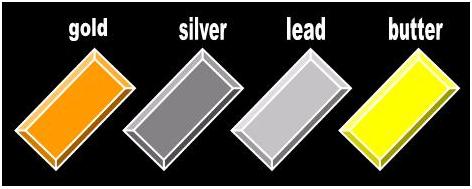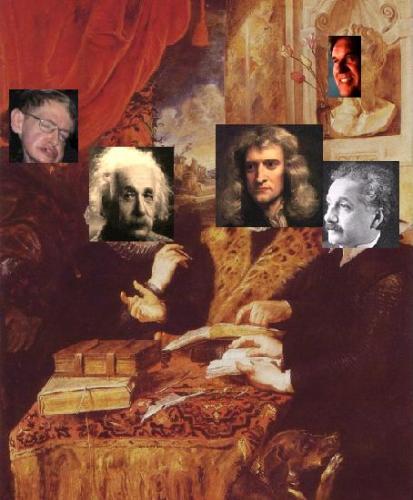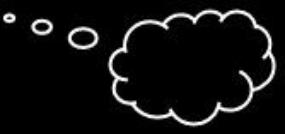| Adapted for the Internet from: Why God Doesn't Exist |
1.0 Is an object anything that I can count as one?
The notion of Oneness is prevalent in every culture and religion and comes to us from ancient times. The Buddhists talk
about being one with the Universe. [1] Christians, Muslims, and Jews officially subscribe to monotheism (while
simultaneously proposing demi-gods such as angels, devils, and spirits). Even contemporary philosophers and scientists
exalt the unity of nature. [2] So it was natural and not altogether surprising in retrospect that the philosophers would one
day debate and propose the most obvious property of an object: that it is a unit:
- “ The principles in question must be either (a) one or (b) more than one. If (a) one, it must
be either (i) motionless, as Parmenides and Melissus assert, or (ii) in motion, as the
physicists hold, some declaring air to be the first principle, others water.” (Bk. I, Part 2) [3]
“ The monad…is nothing but a simple substance…By ‘simple’ is meant ‘without parts’.
Now where there are no parts, there can be neither extension nor form [figure] nor
divisibility. These Monads are the real atoms of nature and, in a word, the elements
of things.” [4]
“ Whatever may be an object of thought, or may occur in any true or false proposition,
or can be counted as one, I call a term…I shall use as synonymous with it the words
unit, individual and entity. The first two emphasize the fact that every term is one,
while the third is derived from the fact that every term has being, i.e. is in some sense..” [5]
“ fundamental particle: A particle with no internal substructure. All other objects are
made from these particles.” [6]
“ Natural objects are, philosophically speaking, individuals; they are involved as units
in dynamic, causal processes.” [7]
These folks are known in philosophical circles as endurantists and include famous Greeks like Parmenides and Zeno.
However, just as someone thought of an object as an indivisible unit, someone else came up with the bright idea that all
objects are divisible and countable. Thus, the notion developed that an object is that which we can divide.
- “ objects which could not possibly have any parts other than their actual ones…
simply do not exist.” [8]
“ In physics, a bound state is a composite of two or more building blocks (particles
or bodies) that behaves as a single object.” [9]
The insinuation of the ‘countable’ philosopher is that an object is the sum of its parts.
Of course, the divisible/countable version led to different sects. Some idiots known as mereologists decided to cut the
pie spatially, (i.e., lengthwise) while others idiots (known as a perdurantists ) prefer to divide the cake in minutes
(time-wise). I discuss why the arguments of these morons fail later, after I define the word object.
- 2.0 Do mass nouns qualify as objects
Leibniz suggested that the ultimate and indivisible objects that comprised all of nature were monads: in a nutshell, the
concept of unity.
- “ Now where there are no parts, there can be neither extension nor form [figure] nor
divisibility. These Monads are the real atoms of nature and, in a word, the elements
of things.” [10]
In his view, the word table refers to a single object. Frege, Russell, and others countered with pluralism and mass nouns.
There are plural terms such as tables that refer to objects treated as a set. Aren’t tables objects as well? Can’t we use this
term as the subject of a sentence? Nevertheless, if the interpretation in the case of plurals is debatable, surely it is not
with the word gold. Words such as gold, blood, matter, water, and air are known as mass nouns. They refer to material
things that may serve as the subject of the sentence, yet they seem to invoke many objects. Therefore, if gold refers to
a physical entity and is an object, what then is the shape of gold?’
What these examples and debates really show is that quantity is not a good criterion to define what an object is. A house
consists of four walls and a roof. A roof consists of 1000 shingles. Each shingle consists of countless molecules and
atoms. Each atom consists of protons, neutrons and electrons. Where do we stop? Isn’t each and every word in this
runaway list an object? Whenever the prosecutor points at Exhibit A and says table, there is no inkling regarding its
constitution. For the moment, the object in question is only part of a hypothesis, the initial scene of a story. Whether
the table is actually made of a single piece or of parts is an issue of theory and proof.
Regarding the so-called ‘mass nouns’ we have to put them in their proper context. If we point to Exhibit A and say gold,
the ET identifies the word with the lump of metal in front of us for the remainder of the presentation. However, the ET
will regard as gold any similarly shaped chunk of metal until we specify in more detail what the word gold actually
stands for. If we want the ET to understand the concept gold, we have no choice but to compare the lump we call gold
against lumps of other metals or elements.
| Russell says that an object is that which is one |
Fig. 1 Mass Nouns |



| Your soul is a physical object because you have only one. |

| Space is a physical object because there is only one. |

| Your legs are not physical objects because you have two of them. |

| Ants are not physical objects because there are too many of them. |

| Is gold not physical because you can't count it? |
| The Philosophers |
- Module main page: Is an object a bundle of properties?
1. Frege says that a variable is an object
2. This page: Russell says that an object is that which is one
3. Lavoisier says that an object is that which cannot be destroyed
4. Newton says that an object is that which has mass and occupies space
5. Plato says that an object is that which is ideal
6. Bohr says that an object is not an object without an observer
7. Elder says that an object is that which is made of parts
- ________________________________________________________________________________________
- Copyright © by Nila Gaede 2008
